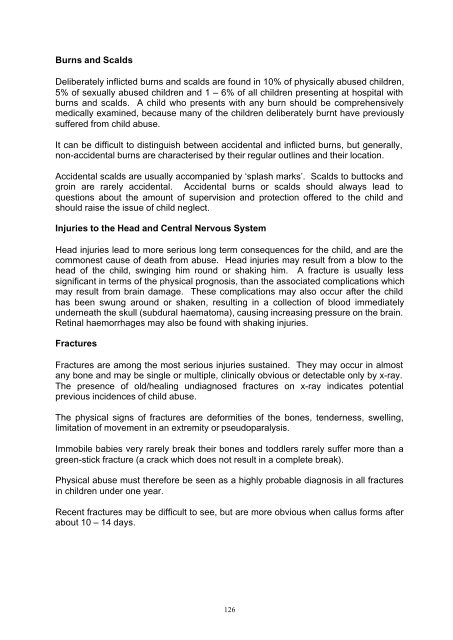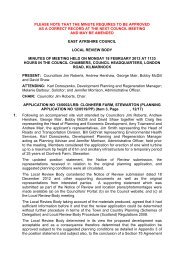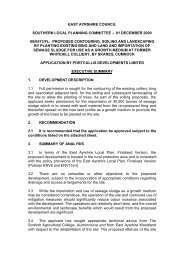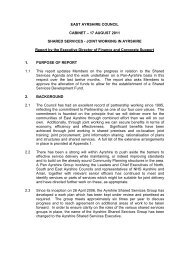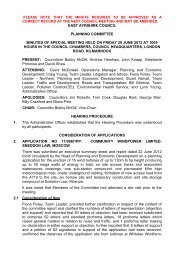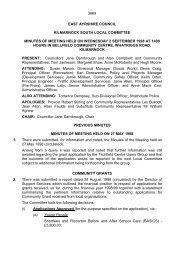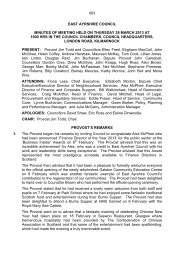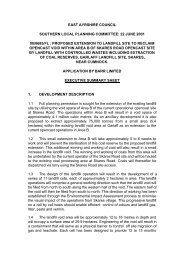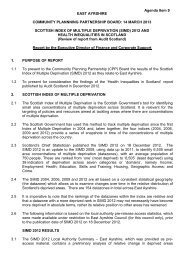Child Protection Procedures - East Ayrshire Council
Child Protection Procedures - East Ayrshire Council
Child Protection Procedures - East Ayrshire Council
You also want an ePaper? Increase the reach of your titles
YUMPU automatically turns print PDFs into web optimized ePapers that Google loves.
Burns and Scalds<br />
Deliberately inflicted burns and scalds are found in 10% of physically abused children,<br />
5% of sexually abused children and 1 – 6% of all children presenting at hospital with<br />
burns and scalds. A child who presents with any burn should be comprehensively<br />
medically examined, because many of the children deliberately burnt have previously<br />
suffered from child abuse.<br />
It can be difficult to distinguish between accidental and inflicted burns, but generally,<br />
non-accidental burns are characterised by their regular outlines and their location.<br />
Accidental scalds are usually accompanied by ‘splash marks’. Scalds to buttocks and<br />
groin are rarely accidental. Accidental burns or scalds should always lead to<br />
questions about the amount of supervision and protection offered to the child and<br />
should raise the issue of child neglect.<br />
Injuries to the Head and Central Nervous System<br />
Head injuries lead to more serious long term consequences for the child, and are the<br />
commonest cause of death from abuse. Head injuries may result from a blow to the<br />
head of the child, swinging him round or shaking him. A fracture is usually less<br />
significant in terms of the physical prognosis, than the associated complications which<br />
may result from brain damage. These complications may also occur after the child<br />
has been swung around or shaken, resulting in a collection of blood immediately<br />
underneath the skull (subdural haematoma), causing increasing pressure on the brain.<br />
Retinal haemorrhages may also be found with shaking injuries.<br />
Fractures<br />
Fractures are among the most serious injuries sustained. They may occur in almost<br />
any bone and may be single or multiple, clinically obvious or detectable only by x-ray.<br />
The presence of old/healing undiagnosed fractures on x-ray indicates potential<br />
previous incidences of child abuse.<br />
The physical signs of fractures are deformities of the bones, tenderness, swelling,<br />
limitation of movement in an extremity or pseudoparalysis.<br />
Immobile babies very rarely break their bones and toddlers rarely suffer more than a<br />
green-stick fracture (a crack which does not result in a complete break).<br />
Physical abuse must therefore be seen as a highly probable diagnosis in all fractures<br />
in children under one year.<br />
Recent fractures may be difficult to see, but are more obvious when callus forms after<br />
about 10 – 14 days.<br />
126


